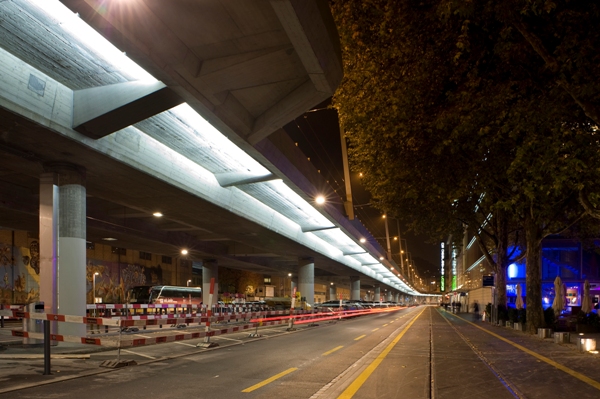Free shipping on orders over £50
TradeHURRY! SPRING SALE Now On! Get 10% Off Using Code KEEP10! Plus FREE SHIPPING On All Orders Over £50!
Introducing Switzerland's Largest LED Lighting Project
 Switzerland’s largest LED lights installation can now be found, perhaps fittingly, in its largest city.
Switzerland’s largest LED lights installation can now be found, perhaps fittingly, in its largest city.
That is after LED lighting solutions designed by Dutch electronics company, Philips, were used to renovate the Hardbrücke Bridge in central Zurich, adding a new dimension to the surrounding areas and drastically reducing energy costs.
The 2.3km Hardbrücke Bridge is one of the busiest roads in Zurich, used by over 70,000 motorists daily, and serving as a direct line of communication between the North and the South of the city. It also provides connections to other parts of the country.
Last year, the Dutch electronics giant was asked to revamp the light system on the upper and lower side of the bridge, in an effort to lower energy and maintenance costs.
On top of this, their other aims were to reduce light pollution and create a safer environment for both the users of the bridge’s upper roadway and the pedestrians on the streets below.
Naturally, Philips saw LED lights as the only real choice that fulfilled all the needs of the new system. Their solution was to supply 1,750 of its LEDline2 luminaires – a high performance linear grazing light.
Zurich authorities then attached them to the underside of the bridge, resulting in a mile-and-a-half ribbon of light that illuminates the many pavements, cycle paths, road ways and tramlines in the surrounding urban area.
The Hardbrücke’s roadway alone, which has been fitted with Philips’ Koffer2 fixtures, has had its energy consumption slashed by 34% from 32kW to 21kW. The LED lights serving the lower portion of the bridge use a tiny 25kW for 1,654 hours a year.
This gives an annual energy consumption of 41,000kWh.
An average price of 15p per kWh means it costs just £6,150 – or €7,392 a year to run in electricity.
According to Philips, the entire installation, taking into account the LED lights both above and below the bridge, has made this the biggest of its kind in Switzerland.
The new light installation has completely transformed the 40 year old Hardbrücke, reshaping the nocturnal image of the city and improving the quality of life for Zurich’s residents.
Crucially it has also demonstrated the feasibility of LED lighting in meeting the challenges faced by urban planners – whether it is an improved quality of light or to become more energy efficient.
According to market analysts, LEDs are expected to become the most widespread form of lighting by the year 2015.
This is because they offer significant energy savings and a superior lifespan when compared to conventional light sources – using 90% less energy than incandescent lights, and lasting 20 times longer too. Most LEDs have a lifespan of up to 50,000 hours.
This highlights LED lights’ potential to save you considerable amounts of money on your home lighting too.






 Search
Search


